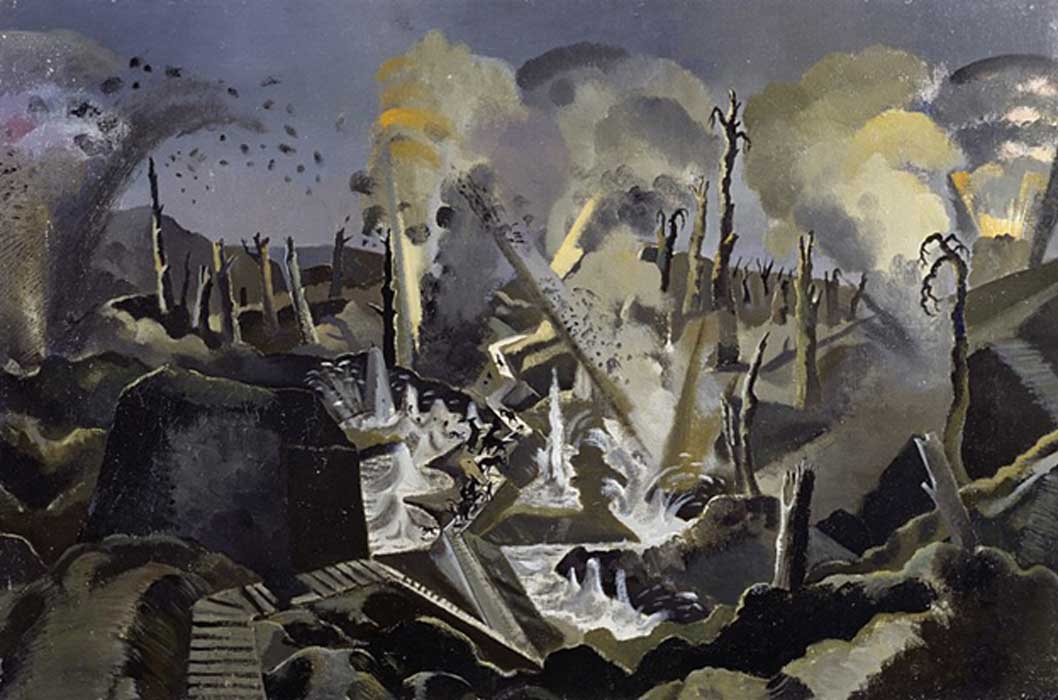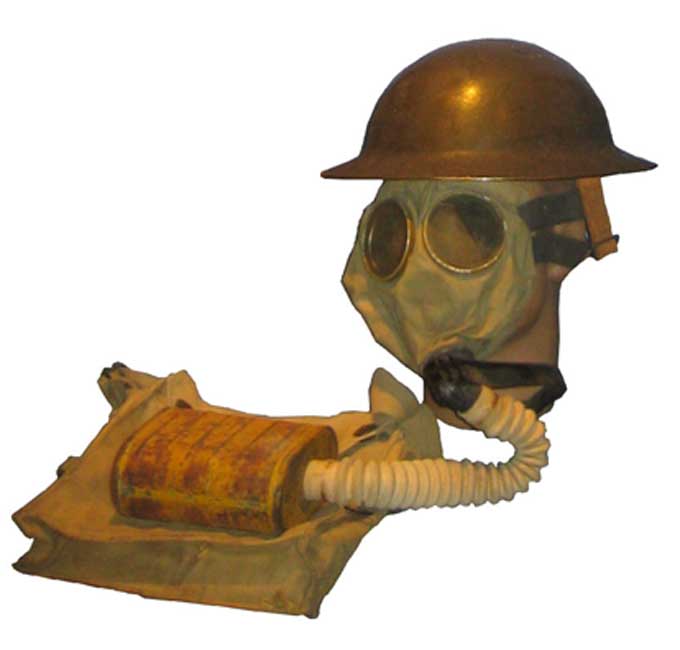
The Cost of War: Supply and Demand – Part II
Once loans had been secured and granted, the World War I monster had an appetite that could not be satiated. The American banking firms, munitions industries, industries and agriculture worked hand-in-hand to fulfill the needs of the Allied Powers. However, the enemy Central Powers received little at the start of the war, and nothing directly from America as the war progressed, but they received in-directly from America due to American trade with neutral nations. These neutral nations trickled down some of the resources to the Germans through trade. Once ruthless profit was to be made, moral values became as much victim as those men dying on the battle fronts.

US WWI Gas mask with bag. (CC BY-SA 3.0)
American Armament Industry
The Poison gas industry in America was very profitable. Poison gas was produced at Edgewood, Maryland for the Allies. In 1916, the United States was producing and selling cyanogen chloride, called CK to the French. An American by the name of Ed Berwick wrote an article in Foreign Affairs, July 1922, discussing the issue that the Allies competed with each other in the production of poison gas: “There were 63 different kinds of poison gas used before the war ended, and in November 1918 our chemical warfare service (established in June of that year) was engaged in 65 "major research problems," including eight gases more deadly than any used up to that date. . . . One kind rendered the soil barren for seven years, and a few drops on a tree-trunk causes it to "wither in an hour”. Our arsenal at Edgewood, Maryland, and its tributaries was turning out 810 tons weekly against 385 tons by France, 410 tons Britain, and only 210 tons by Germany.” The increase came close to 3,000 tons a week. Congress had appropriated $100,000,000 and allotted 48,000 men for employment.
The Winchester Repeating Arms Company, 22,000 employees strong during the war, produced an assortment of rifles, bayonets, and cartridges and saw a boom in manufacturing these items during the war. In a 1921 catalogue, Winchester mentions that it came close to selling 2,000,000,000 separate units made up of guns, rifles, bayonets, shells, and cartridges. They also mentioned that the Allies, before America’s entry into the war, rejected none of the 700,000,000 cartridges produced.
Remington Arms was in high demand when Great Britain, Russia and France placed orders for rifles, small arms, ammunition, bayonets and shells. What makes Remington interesting is that out of all the arms companies mentioned or soon to be, they were rather unique in that each factory seemed to deal with a different nation. The factory at Swanton, Vermont dealt specifically with French munitions particularly rifle cartridges. Another factory at Hoboken, New Jersey made cartridges and bullets specifically for the Russians. Moreover, the Remington Company, like Winchester, adjusted their machinery and introduced new machines to build the British Enfield rifles. However, once the United States entered the war, they placed an order for the Springfield rifle that complicated matters somewhat, due to the need to readjust the machinery. Thus, American soldiers were using both the Enfield and Springfield rifles.

Camouflaged Springfield Rifle with telescopic sight used by snipers, Badonviller, 18 May 1918 (Public Domain)
Another arms company was the United States Cartridge Company. In 1914, they employed 1,200, but when the war broke out, they employed 15,000. The United States Cartridge Company filled orders for the British, Russian, Dutch, Italian, French, and the United States governments. In total, the company produced an astounding 2,262,671,000 units in war material.




